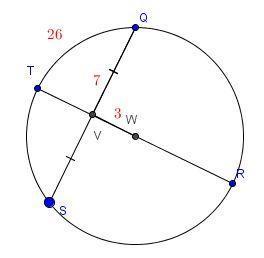
Mathematics, 22.06.2019 14:00, jazprincezz7606
Aresearcher wanted to study the effect of a newly developed gasoline additive (additive x) on automobile mileage (miles per gallon, mpg). to gather information, a random sample of cars has been selected and their gasoline mileages (mpg) have been determined. for each car, the mpg was measured both when gasoline without additive x is used and when gasoline with additive x is used. the order of the two treatments (with additive x versus without additive x) was randomized and care was taken so that there was no carry over effect between the two measurements. the 90% confidence interval for the average improvement in mileage (difference = mpg with additive x less mpg without additive x) for the population of all such cars was found to be (1.5 mpg, 3.5 mpg).1. the margin of error of this interval is? 2. consider the following statement: if we were to repeat this study many times, we would expect 90% of the resulting cars to have mileage improve from 1.5 mpg to 3.5 mpg when using the new additive x. is this a correct statement, and thus, could be used in the report summary? yes or no? 3. consider the following statement: if we were to repeat this study many times, we would expect 90% of the resulting intervals to contain the sample mean improvement in mileage (with additive x versus without additive x).is this a correct statement, and thus, could be used in the report summary? yes or no? 4. consider the following statement: with 90% confidence, we would estimate the mean improvement in mileage with the new additive x to be between 1.5 mpg and 3.5 mpg for the population of all such cars. is this a correct statement, and thus, could be used in the report summary? 5. a competitor’s fuel additive had an established average improvement in mileage of 1 mpg. the researcher would like to use the confidence interval to test the hypotheses h0: μ = 1 mpg versus the alternative ha: μ ≠ 1 mpg, at a 10% level of significance. here the parameter μ represents the mean improvement in mileage (with additive x versus without additive x) for the population of all such cars. what would be her decision? a. reject null hypothesisb. fail to reject null hypothesisc. cannot be determined since the sample size is not known

Answers: 2
Other questions on the subject: Mathematics

Mathematics, 21.06.2019 14:30, Naysa150724
Explain why the two figures below are not similar. use complete sentences and provide evidence to support your explanation. (10 points) figure abcdef is shown. a is at negative 4, negative 2. b is at negative 3, 0. c is at negative 4, 2. d is at negative 1, 2. e
Answers: 3


Mathematics, 21.06.2019 20:30, Travisbennington
Three numbers x, y, and z are in the ratio 2: 7: 8. if 12 is subtracted from y, then three numbers form a geometric sequence (in the order x, y–12, z). find x, y, and z. there are 2 sets.
Answers: 1

Mathematics, 21.06.2019 21:00, vliu470
Even if a person is in very good shape, applying to be a police officer requires commitment to fitness. applicants must pass a physical fitness test. in order to prepare for the test, janet purchases an activity tracker to court her steps. her goal is to walk 10,000 steps each day. she measures heard average step length to be 30 inches. play janet runs, her average steps length increases to 36 in. how many steps would she have to take to run 1 mile 50280 round to the nearest step
Answers: 3
Do you know the correct answer?
Aresearcher wanted to study the effect of a newly developed gasoline additive (additive x) on automo...
Questions in other subjects:


Mathematics, 19.08.2019 13:30


Biology, 19.08.2019 13:30

Mathematics, 19.08.2019 13:30


Mathematics, 19.08.2019 13:30


Chemistry, 19.08.2019 13:30







